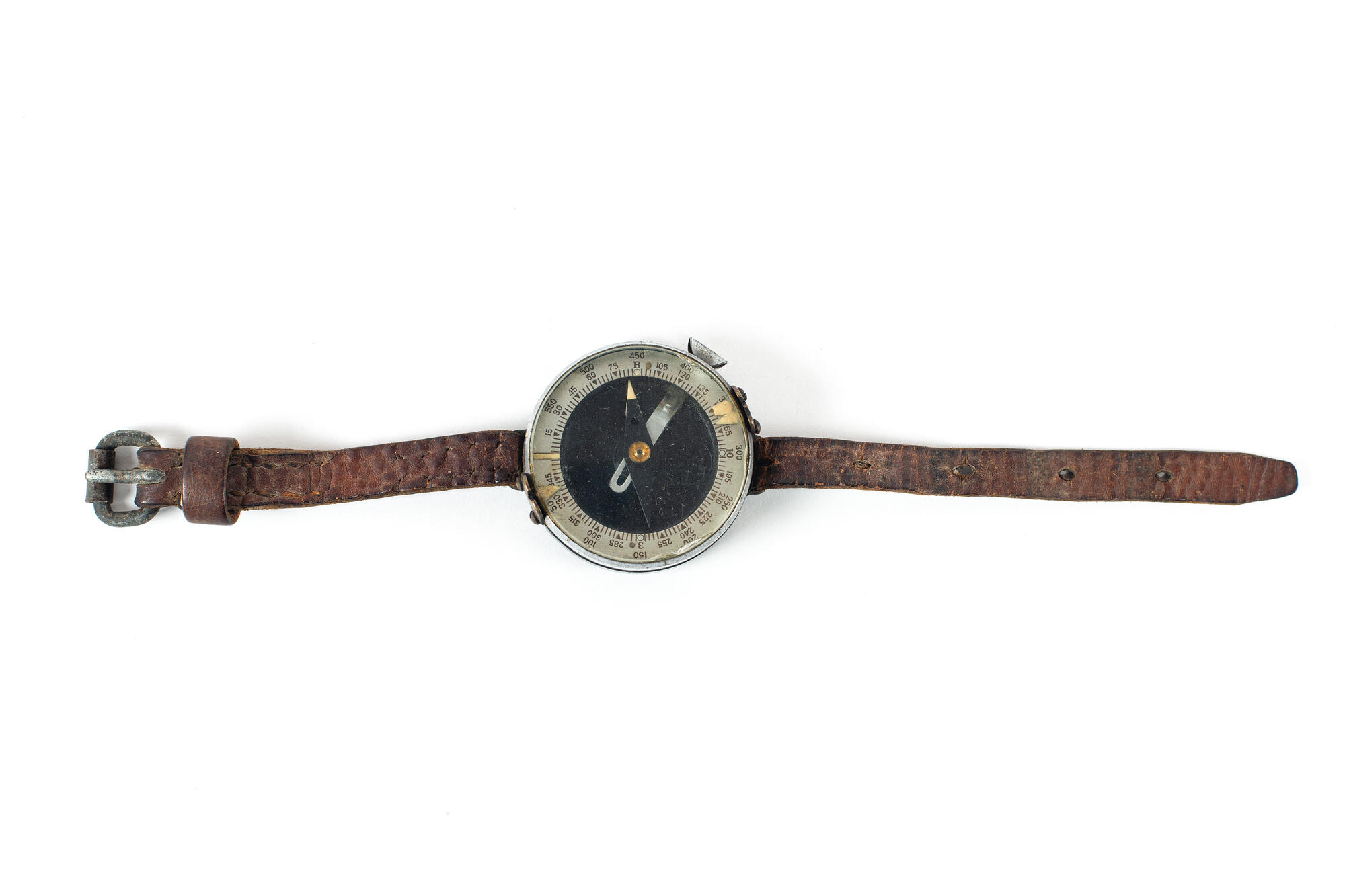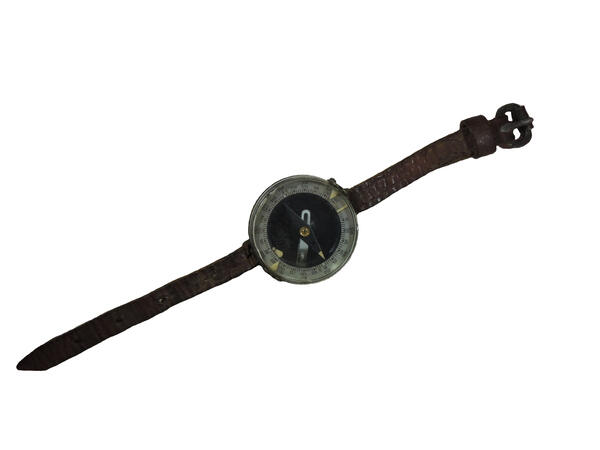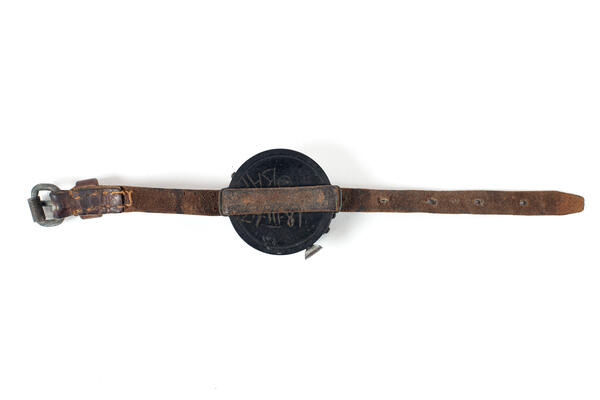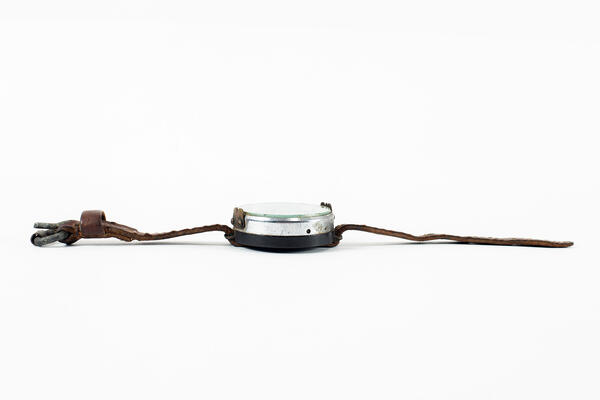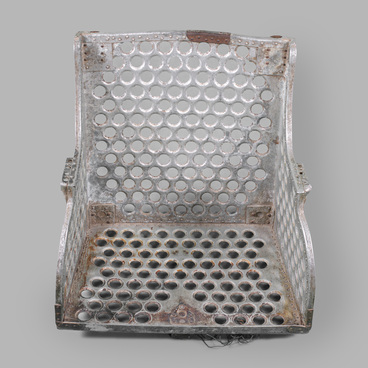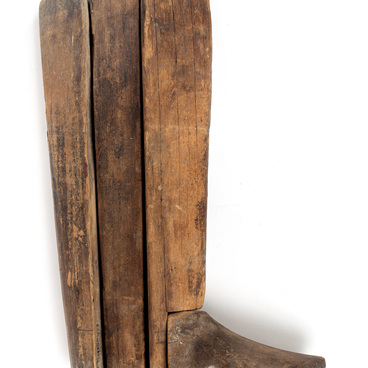The Military Hall of the Vyacheslav Gromov Museum of Local Lore in Sergach displays an Adrianov magnetic wrist compass on a leather strap. It was an important piece of equipment for all commanders of the Red Army during the Great Patriotic War. The magnetic compass allows to navigate by showing the cardinal directions — north, south, east, and west. It was invented in China over 2,000 years ago, but such devices were also mentioned in the legends of Hyperborea.
The Adrianov compass is a Russian and Soviet standard military wrist compass created by the Russian cartographer Vladimir Nikolaevich Adrianov in 1907. Along with the artillery compass, it was considered the most common navigation tool in the Armed Forces. The compass contains radioactive substances, but as it is intact, it is safe.
The dial of the Adrianov compass is divided into 120 parts and shows two sets of digits — the degrees: clockwise from 0 to 360 in increments of 15° and counterclockwise from 0 to 60 in increments of 5°. Unlike earlier models, this compass has phosphorescent markings that made it possible to use it in the dark without an external light source. The compass had to be charged daily with sunlight so that the dial could be seen at night.
In the 1920s, designers began to use substances based on isotopes of thorium or radium, which glowed due to hard radiation. Hence, the compass did not need to be recharged. However, by the mid-20th century, it was proven than repeated exposure to these substances causes detrimental health effects, and new materials began to be used. The following generations of military compasses were stronger, more reliable and convenient in determining azimuths — especially liquid-filled compasses with a lens or prism.
The army field compass from the collection of the Museum of Local Lore belonged to Ivan Grigoryevich Soldatov, who was born in 1910 in the Nizhny Novgorod Governorate. An active Komsomol member, public figure and teacher, in 1941 he led the construction of defensive lines. Soldatov graduated from military school, fought on the Kursk salient, was awarded the medal “For the Victory over Germany in the Great Patriotic War of 1941–1945”.
The Adrianov compass is a Russian and Soviet standard military wrist compass created by the Russian cartographer Vladimir Nikolaevich Adrianov in 1907. Along with the artillery compass, it was considered the most common navigation tool in the Armed Forces. The compass contains radioactive substances, but as it is intact, it is safe.
The dial of the Adrianov compass is divided into 120 parts and shows two sets of digits — the degrees: clockwise from 0 to 360 in increments of 15° and counterclockwise from 0 to 60 in increments of 5°. Unlike earlier models, this compass has phosphorescent markings that made it possible to use it in the dark without an external light source. The compass had to be charged daily with sunlight so that the dial could be seen at night.
In the 1920s, designers began to use substances based on isotopes of thorium or radium, which glowed due to hard radiation. Hence, the compass did not need to be recharged. However, by the mid-20th century, it was proven than repeated exposure to these substances causes detrimental health effects, and new materials began to be used. The following generations of military compasses were stronger, more reliable and convenient in determining azimuths — especially liquid-filled compasses with a lens or prism.
The army field compass from the collection of the Museum of Local Lore belonged to Ivan Grigoryevich Soldatov, who was born in 1910 in the Nizhny Novgorod Governorate. An active Komsomol member, public figure and teacher, in 1941 he led the construction of defensive lines. Soldatov graduated from military school, fought on the Kursk salient, was awarded the medal “For the Victory over Germany in the Great Patriotic War of 1941–1945”.
